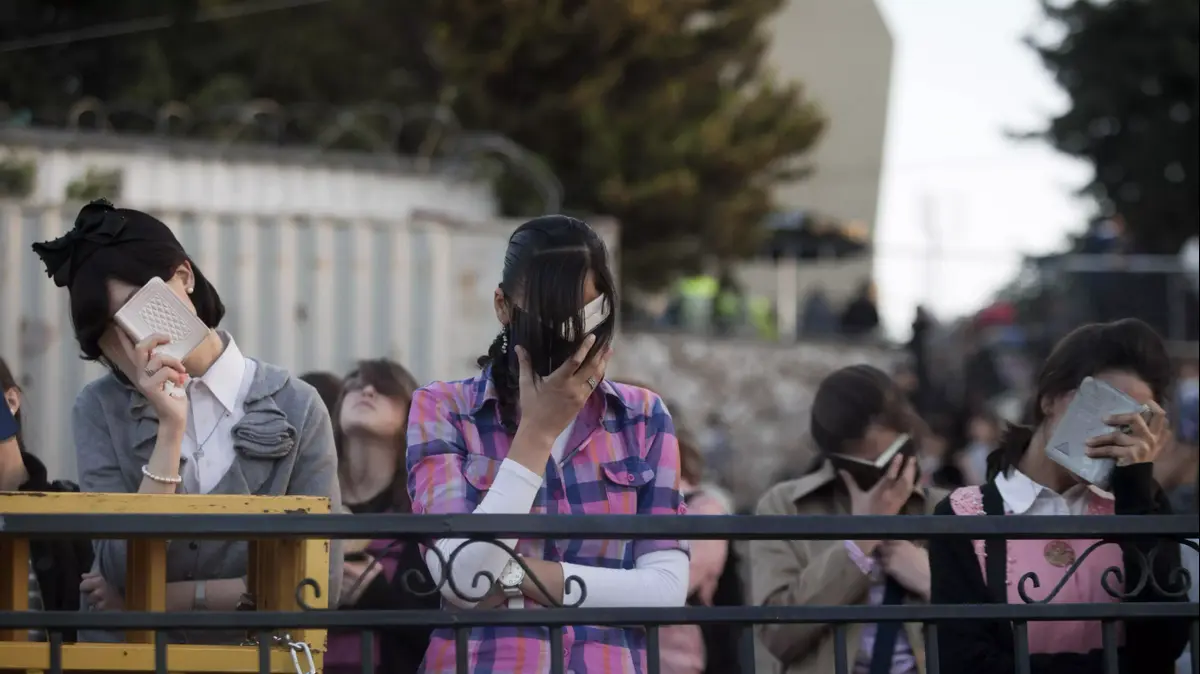01 view
Written by: Commentary Editing Room
2020-10-27 18:15
Last update date: 2020-10-27 18:15
At the beginning of October, six huge cartoon advertisements by local well-known cartoonist Lin Xiangkun were hung on the outer wall of West Kowloon Center, making this wall become the center of the conversation among Hong Kong people.
Some parents and district councilors think that they are "excessively sexy" and not as a gift, but some citizens think that the opponents are "moral Taliban", which belonged to Lu Xun's writing, "when I see short sleeves, I immediately think of white arms and nakedness." , I immediately thought of the genitals..."
In addition, these six works have triggered controversy about whether they belong to patriarchal gaze, women's body autonomy or consumerist discipline. It can be seen that the six works of Lin Xiangkun are indeed quite topical.
Art and pornographic cultural discussions and political labels
The boundary between art and pornography is undoubtedly a cultural topic worthy of fun and discussion.
In the field of art, "Nude" is a neutral state statement, and "Naked" means deliberate exposure. For example, some people think that the difference between art and pornography is that the work is designed to make people feel "the beauty of nudity". "It is still to expose sexual organs or the body to cause sexual fantasies, but this kind of inference based on "beauty" and "behavior intention" is undoubtedly easy to become subjective evidence.
Others try to distinguish the two by the level of artistic expression such as color and line.
It's as if it's easy to distinguish the erotic and artistic elements between a nude selfie and the statue of David in Florence, but this does not mean that there is no gray area in between.
Egon Schiele, a modernist painter in the early twentieth century,’s works are bold in color, and the perspective effect of the line outline is even more magical, undoubtedly bringing the feeling of “beauty”, but at the same time his works express the ultimate expression In 1912, his lust was accused of being an obscene painting, which also brought another artist Nicola Tyson (Nicola Tyson) questioning: "Just because his works are beautiful paintings rather than ugly photos, his Do erotic works liberate women?"
The controversy triggered by the cartoons on the West Kowloon outer wall could have been an in-depth debate about the boundaries between artistic nudity and obscene nudity, or it could be a rational discussion about whether there should be age restrictions on artistic appreciation.
It's a pity that in the end it has become a different camp label, attacking each other's battlefield, and even politicizing such a cultural discussion into a vulgar struggle between the establishment and the non-organization. It is a pity.
The embarrassment of the West Kowloon Billboard girl showing and not showing
The second controversy triggered by billboards is that the exposure of girls is a demonstration of feminist progress or patriarchal oppression.
On the one hand, some feminists believe that the female images created in these advertisements are subservient to the "male gaze," which focuses on embodying the characteristics of females being able to meet the "sexual objects" of male desires, such as being young and beautiful, having a good body, and being exposed. It is used to satisfy women's imagination and desires of themselves, and it also strengthens the society's specific aesthetic disciplines for women.
Another group of feminists believes that rudely rejecting all nudity and the aesthetic that fits the male gaze is tantamount to "new discipline" of women, and will also trigger new criticism of women, such as "slut humiliation."
Therefore, instead of rejecting male gaze by advocating "sexual conservative", this view supports women's physical freedom and expresses their sexual charms and desires freely like men in order to achieve empowerment of women, so that they can follow the rules and regulations. The sexual object turns into a sexual subject.
The opinions of the two sides put the women who appeared on the West Kowloon Billboard into a dilemma of "showing" and "not revealing."
The former can be regarded as bowing to the male gaze, and the latter can be regarded as bowing to the patriarchal "slut humiliation". So, should we "show" more or "not show"?
The dilemma between "exposure" and "nonexposure" is that patriarchy has two disciplines for women at the same time. On the one hand, there are both the naked aesthetic of male gaze, and on the other hand, there are "sluts who treat women as private property and do not allow them to be exposed." humiliation".
Therefore, under the "two-sided attack" of patriarchy, women cannot ignore the "texture" and "subjective experience and feelings" of their own choice, so as not to be too arbitrary and enter a new discipline.
A similar example is that whether women tend to whiten or tan, they can all be said to be "brainwashed" by Eastern or Western consumer culture and patriarchal aesthetics.
Under this circumstance, what should be done is not to label female choices, but to attach importance to their choice context and subjective thoughts. Otherwise, it will be easy to cause the Korean Su Yan Revolution and the Tianma Movement during the Republic of China to be called Liberation of Women, but in fact, new disciplines are implemented for women. Oolong.
At the end of 2018, South Korea set off the "no makeup revolution" for women, opposing the various pressures and disciplines that Korean society put on women's appearance.
Participants of the movement have successively posted photos of their makeup on social networks, or stopped buying cosmetics on a certain day, in order to resist the society's established scrutiny of them.
However, after the movement developed, there were attacks on women with makeup, long hair, and tight skirts.
In 1927, the Civil Affairs Department of Guangdong Province, in order to follow the Tianzu movement and liberate women's breasts, issued the "Proposal to Prohibit Women's Corsets", which became the "Tianzu Movement."
The original intention was to change the concept of flat breasts as beauty in the early years of the Republic of China, and to liberate women from corsets. It was only the enforcement of laws and regulations, including policewomen inspecting women's corsets on the street, women’s organizations visiting the house, and fines of 50 for violations. Let the movement be controversial, and it will soon come to an end.
In other words, the West Kowloon advertising version of the girl cartoons should "show" or "not show," whether it belongs to patriarchy or feminism. You can't just focus on the advertisement itself and ignore different interpretations of information.
On the long road to equality between men and women, we should not indulge in labeling others or even imposing new disciplines too late.
After all, true feminism is not to set a new template for women, but to give women the right to freely choose and express.
01 depth
Culture and Art Hong Kong Comics





/cloudfront-eu-central-1.images.arcpublishing.com/prisa/7LCX4AG2Q3OGZDI5I3ZR2WPDW4.jpg)









